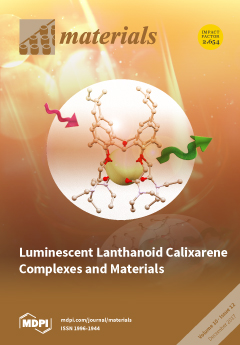This study explored an alternative approach using rheology to assess setting time. The following cements were tested: ProRoot
® MTA (Dentsply, Tulsa, OK, USA), Biodentine
® (Septodont, Saint Maur des Fosses, France), Fuji VII
®, FujiVII
® EP, and Fuji IX
®
[...] Read more.
This study explored an alternative approach using rheology to assess setting time. The following cements were tested: ProRoot
® MTA (Dentsply, Tulsa, OK, USA), Biodentine
® (Septodont, Saint Maur des Fosses, France), Fuji VII
®, FujiVII
® EP, and Fuji IX
® (from GC Corporation, Tokyo, Japan), RealSeal SE™ Sealer (SybronEndo, Amersfoort, The Netherlands), AH 26
® and AH Plus (both from Dentsply DeTrey, Konstanz, Germany). Freshly mixed cements were placed into a strain-controlled rheometer (1 rad·s
−1 with an applied strain of 0.01%). From measurements of elastic modulus over time, the time taken to reach 90% of the plateau elastic modulus (designated as the setting time) was determined for each cement. In increasing order, the setting times were as follows: Fuji VII EP 3.3 min, Fuji VII 3.6 min, Fuji IX 3.7 min, ProRoot MTA 5.1 min, Biodentine 15.9 min, RealSeal 22.2 min, AH Plus 5933 min, and AH 26 5067 min. However, ProRoot MTA did not yield reliable results. The time to reach the 90% plateau elastic modulus correlates well with the setting time of glass ionomer cements and Biodentine. Using this approach gives much longer setting times for endodontic sealers than previously recognized.
Full article






